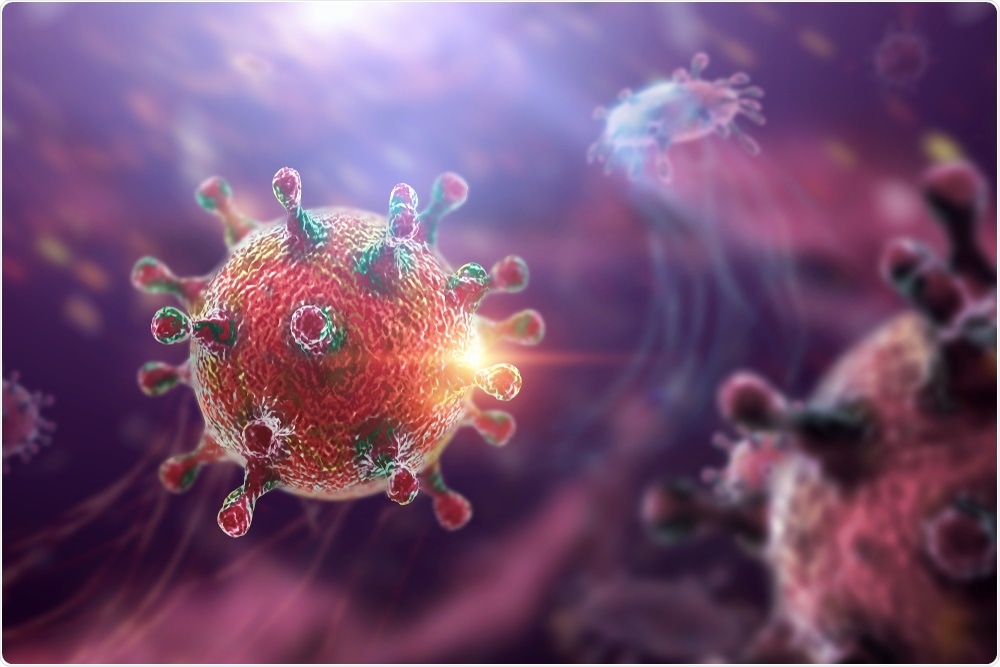A new slow-release vaccine has been shown to boost the immune system’s response to the HIV virus. Scientists discovered that administering an HIV vaccine in small doses over a period of days resulted in stronger immune responses compared to a single dose of the vaccine.
 Marko Aliaksandr | Shutterstock
Marko Aliaksandr | Shutterstock
The study was published in Cell in May 2019 and focuses on targeting the way in which immune cells work together to eliminate pathogens.
B cells are a type of white blood cell that produces antibodies in the bone marrow. During development, these cells move to areas of the lymph nodes called germinal centers. B cells that produce the antibodies capable of binding to the HIV pathogen are selected by T follicular helper (TFH) cells, and the strongest B cells then continue on to go through further mutations, testing, and the antibodies they produce are refined.
It’s like physical training – you start off weak and then keep going back to the gym to get stronger. The germinal center is the gym and the B cells have to repeatedly go back to undergo rounds of selection to get better binding.”
Kimberly Cirelli, First Author
When faced with HIV, B cells produce antibodies that bind to the specific parts of the virus that trigger the infection. However, this is only successful for a short period of time, as the virus mutates and becomes undetectable to the immune cells once again.
'A broadly neutralizing antibody for HIV’
Shane Crotty, PhD, leader of this new study and a professor in the Division of Vaccine Discovery at LJI said the “vast majority” of antibodies bind to the wrong place on the HIV virus, rendering them “useless.”
A separate paper published in Immunological Reviews in 2017 explained that advances in HIV vaccine research have “derived from the investigation of antibody responses in HIV-infected individuals using tools that have been designed to […] identify rare antigen-specific B cells from which [broadly neutralizing antibodies] can be generated”,
But this new study begins by explaining that “Conventional immunization strategies will likely be insufficient for the development of a broadly neutralizing antibody (bnAb) vaccine for HIV or other difficult pathogens because of the immunological hurdles posed, including B cell immunodominance and germinal center (GC) quantity and quality.”
To combat this issue, Crotty and his research team compared three vaccine strategies to investigate whether certain dosage strategies would better neutralize antibody production.
The study was carried out in collaboration with researchers at Yerkes National Primate Research Center, and rhesus monkeys were deemed the best animal model to study how the human immune system reacts to the HIV virus.
The first strategy involved a traditional vaccine that was delivered in one dose. The second used an ‘osmotic pump’ strategy, which consisted of an implant that administered the full dose more slowly. The third strategy used an escalating dose, where the monkey models were administered partial doses every other day over the course of 12 days.
‘A beautiful thing’
Crotty described the immune response to the traditional vaccine as “lousy”, but the two slower release strategies resulted in higher quantities of antibodies that were also of better quality.
“It was a beautiful thing to get to see what was happening in the lymph nodes over time,” Crotty said.
“This paper demonstrates the power of the approach,” he added, as the paper demonstrates that it may not be the vaccine itself that needs to be changed to improve its efficacy.
If you change the way the immune system sees viral proteins, it really can make a dramatic difference.”
Practical methods for clinical delivery of the HIV vaccine using this slow-release strategy is the next step necessary in advancing this intriguing research.
Cirelli, who is also a member of the Scripps Research’s Center for HIV/AIDs Vaccine Immunology and Immunogen Discovery (Scripps CHAVI-ID), said that they may need to “think more outside the box to develop vaccines against harder-to-neutralize pathogens, including HIV.”
A possible route could be to contain the vaccine in degradable capsules that will be easier for patients to take than multiple doses or using osmotic pumps.
Sources:
Moir, S. & Fauci, A. S. (2017). B cell responses to HIV infection. Immunol Rev. doi.org/10.1111%2Fimr.12502.
Cirelli, K. M., et al. (2019). Slow Delivery Immunization Enhances HIV Neutralizing Antibody and Germinal Center Responses via Modulation of Immunodominance. Cell. doi.org/10.1016/j.cell.2019.04.012.